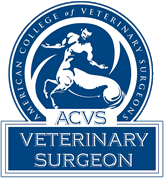Post-Op Instructions
What care will my pet require after surgery?
- Discharge instructions vary based on the condition being treated and the procedure that was performed. Specific written instructions for your pet will be provided for you and I will review them with you immediately after surgery.
- However, there are general instructions that you can expect for most procedures. Please do not hesitate to contact your veterinarian or I if you have any questions on these instructions.
General discharge instructions.
- Activity restriction- This is very important following surgery and typically means preventing your pet from running, jumping, and playing. Limiting access to stairs and preventing pets from getting up and down off of furniture, playing fetch, and rough-housing with other pets is also recommended. Restriction to short leash walks while outside and varying degrees of confinement while inside are necessary during this period. While the restriction period may be as little as 1-3 weeks for certain soft tissue surgeries, it is typically 6-12 weeks for most orthopedic procedures.
- Incision care- Please monitor your pet’s incision for redness, swelling, and drainage. In some cases, cold or warm compresses will be recommended in the postoperative period. Pets should be prevented from licking, chewing, or scratching at their incisions. An Elizabethan collar may be recommended to prevent this.
- Suture removal- Skin sutures or staples are used for most skin closures. These are typically removed about 2 weeks from surgery. Please make an appointment for suture removal at the recommended time with your veterinarian.
- Feeding- You can typically continue to feed the same food on the same schedule following surgery. If a specific diet or feeding schedule is recommended, this will be outlined in your discharge instructions. Anesthesia and surgery can slow down the gastrointestinal tract. Monitor your pet’s food and water intake and call if you have concerns or if you note any vomiting.
- Elimination- Because anesthesia and narcotics slow gastrointestinal motility, many patients do not have a bowel movement for 1-3 days. Do not be concerned about this as long as your pet is eating, acting normal, and isn’t straining to defecate. Note the consistency of your pet’s stool and call if you note diarrhea. Your pet may need to urinate more frequently for the first day or two following surgery due to the intravenous fluids that are administered during anesthesia.
- Recovery from anesthesia- Some grogginess is expected for the first couple of days following anesthesia. It is especially important to keep your pet away from stairs and slippery surfaces during this time to protect them from injury.
- Medications- Pain medications to make your pet comfortable are typically prescribed. These include non-steroidal anti-inflammatory medications (NSAIDs) and narcotic pain medications. Antibiotics may also be prescribed. Do not administer any medications not prescribed by your veterinarian- especially those intended for human use- as they can be toxic to animals.
- Physical therapy- Flexion and extension exercises and other range of motion exercises are usually recommended following orthopedic procedures and will be outlined in your discharges.
- Recheck examinations- For some surgeries your veterinarian may only need to recheck your pet at the time of suture removal. For other surgeries, you may need to schedule additional rechecks to evaluate healing by taking radiographs. All recommended recheck times will be noted in your pet’s discharge instructions.
- Please do not hesitate to call if you have any concerns or questions at any time while your pet is recovering from surgery.
